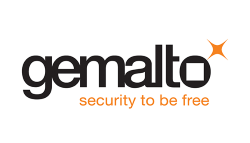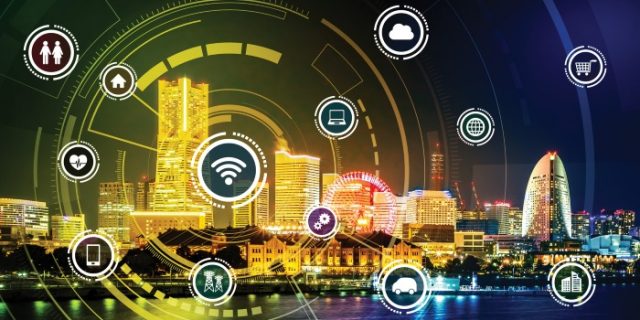The modern trend towards urbanisation is steadfast, writes Haider Iqbal, the director for IoT in Public Services and Transport at Gemalto. Today, 54% of people worldwide live in cities, a proportion that is expected to reach 66% by 2050, according to United Nations projections.
Urbanisation combined with the overall population growth will add another 2.5 billion people to cities over the next three decades. To keep pace with expansion, sustainability is must. More than 190 countries have pledged to meet agreed goals for sustainable growth and the smart city concept holds the key to success.
While there are many definitions, a smart city is essentially an intelligent and complex framework encompassing connected objects and machines that send data to the cloud where intelligence is managed and analysed to help municipalities and businesses make better decisions and improve citizens’ lives. Municipalities and their private sector partners are launching smart street lights, parking meters, smart grid and building management solutions and citizens use connected devices like cell phones, connected cars and smart homes to engage with the ecosystem. From energy distribution to trash collection, to traffic, parking and the air we breathe, the combination of connected devices and data paired with a city’s physical infrastructure and services can greatly simplify and enhance the lives of residents while reducing costs for city governments. The potential is staggering. So, what are the technologies driving smart cities forward?
Pervasive connectivity, the first essential element for smart cities
The first building block of any smart city application is reliable, pervasive wireless connectivity. Evolving low power wide area network (LPWAN) technologies are well suited to smart city applications. Although many wireless technologies (LTE CatM, NB-IoT, LoRa and the like) are contributing to the fabric of connected cities, the advent of 5G is expected to be a watershed event that propels smart city technology into the mainstream and accelerates new deployments.
With cost efficient, secure, wireless service, innovative smart city technology can transform a traditional streetlight into an intelligent platform that integrates solar power and connects to a central control system. The solution can enable a variety of use cases beyond lighting, where high-power LEDs can now be dimmed on demand and even be used to alert pedestrians and vehicles about emerging traffic issues or when events occur. The lamps can also detect free parking spaces and alert drivers where to find them. They can also guide electric vehicle (EV) drivers to the nearest available charging station via a mobile app where they can make a reservation. And in some world regions, the streetlight itself can be localised to allow EV recharging directly from the lamppost.
With seamless connectivity, all these disparate systems – streetlights, intelligent roads, parking meters and electric vehicle (EV) docks – can connect and deliver the promise of improved convenience and performance to citizens. To support such efforts, governments around the world have launched Smart Cities Initiatives like the BroadbandUSA initiative that provides technical assistance to communities launching citywide connectivity. However, connectivity is only the first step to realising smart cities of the future. The second essential element is opening the doors to data.
Unlock the vault to open data
Historically, governments, enterprises and individuals alike have held their data close to themselves, sharing as little as possible with others. Privacy concerns and fear of security breaches have far outweighed the perceived value of sharing information. However, a key enabler of sustainable smart cities is that that all participants in the complex ecosystem share information so that informed decisions can be made in realtime. Multiple sectors need to cooperate to achieve better, sustainable outcomes through the analysis of contextual realtime information, which is shared among sector-specific information and operational technology (OT) systems. For instance, imagine a major urban area is gearing up for a mega event like the Olympics or the World Cup finals. As the city prepares to transport, feed, house and supply power to hundreds of thousand of visitors, it’s essential that municipal intelligent transport systems are sharing data with Uber and Airbnb platforms to get people from point A to point B without seizing up the city’s infrastructure. In Dubai, one of the world’s most ambitious and comprehensive data initiatives is already underway to improve the quality of city living.
Data Dubai leads the way
The Dubai Data initiative, launched in 2015, is a citywide data sharing initiative in the world. It addresses public and private sectors equally, with the government leading the way by opening and sharing its own city data. The goal is not to own the most data, but to unleash the greatest value from data, creating new opportunities and improved experiences for everyone. The iterative and collaborative process in Dubai is defining best practices and establishing a new currency of data and information used to exchange value and develop innovative ways to live, learn and do business. The process is helping Dubai graduate from an e-government to become a digital government.
However, the new culture of data sharing comes with risk. As many more devices and systems are connected and exchanging information, the cyber threat surface increases manifold. The infamous Mirai Botnet attack of 2016 demonstrated how unsecured IoT devices could be easily hijacked to launch internet-crippling distributed denial of service (DDoS) attacks. And, as the number and types of IoT devices continue to proliferate, the risks will only increase. This presents a huge challenge for individuals, enterprises and governments who have to manage an incredibly complex emerging security ecosystem.
Smart cities only work if we can trust them. Open data gathered from different sources needs to be shared but only with authorised and approved platforms and individuals. Strong authentication and trusted ID management solutions are the third essential element needed at all levels of the ecosystem to enable trust that smart cities are safe cities.
Secure open data across the smart city ecosystem
The smart city ecosystem is inherently complex, which can be mitigated though strong authentication and ID management solutions that enable a secure digital handshake between different parties in the ecosystem that either allows or denies access.
Governments, enterprises, citizens, software providers, device manufactures, energy providers and the networks they operate on all come into play and every link in the chain must be held accountable to this same set of core security objectives, which include four core goals:
1. Availability: Ensuring timely and reliable access to and use of information is an essential component of the smart city. Without actionable, real-time, and reliable access to data, the benefits of the smart city simply cannot be realized. How data is collected, distilled and shared is highly important, and security solutions must support these aims by avoiding negative effects on availability.
2. Integrity: Smart cities depend on reliable and accurate data. To prevent fraud and other more harmful attacks, measures must be taken to ensure that data is accurate and free from manipulation.
3. Confidentiality: Smart cities generate huge volumes of data that must be collected, stored and analysed. Some of this data will include sensitive details about citizens themselves. Steps must be taken to prevent unauthorised disclosure of sensitive information.
4. Accountability: Accountability is the idea that users of a system should be responsible for the actions they perform. This means that user interactions with sensitive systems should be logged and associated with a specific user. These logs should be difficult to forge, and have strong integrity protection.
To achieve security core objectives, strong authentication and ID management solutions need to be integrated into the ecosystem to ensure that data is shared only with authorised parties as well as to protect backend systems from intrusion and hacking. Thankfully, as a result of growing digital security concerns, legislation, including the IoT Cybersecurity Improvement Act in the US, is being introduced to address threats and potential market failure by establishing minimum security requirements for connected devices.
In the age of IoT and smart cities, data is the new oil, and in order for smart cities to thrive, we need to establish sustainable commerce models that facilitate the success of all ecosystem players. The fourth essential element to realizing smart city success is establishing sustainable monetisation solutions from the beginning that enable new revenue streams and business models while further protecting open data.
Monetising sustainable smart cities
Sustainability is a crucial objective of smart city projects. The concept of sustainability originates from biological systems working in perfect harmony – where each member of the ecosystem uses part of it for their own good, and in return, contributes their own skills to the system. If unchecked, any member abusing its power can affect the whole ecosystem. For cities to become sustainable ecosystems, mechanisms need to be woven into its fabric to ensure that all ecosystem members can thrive including OEMs, developers, integrators, governments and others. Each member’s intellectual property needs to be valued and rewarded. Thanks to software capabilities, new business models are emerging that allow each contributor to extract value from their contribution in the smart city ecosystem. Subscription-based models such as product-as-a-service are enabling new ways to monetise hardware and software components that are being used to build smart infrastructures. Expensive medical equipment like MRI scanners, for example, can be sold at a costper-scan rather than an upfront capex by hospitals, thereby creating a win-win situation for hospitals and suppliers alike.
As the subscription economy gains traction, enterprises and individuals can use it to balance business models and spread out huge one-time expenses over months or even years. Connectivityenabled data exchange provides increased transparency and business intelligence for the end user and the vendor alike. With secured, open data, a new sharing economy is made possible.
Smart cities and the sharing economy
Imagine a future where your city offers a subscription to a fleet of vehicles that are shared between multiple owners. For a small initial investment, drivers buy into shared ownership, or transportation-as-a-service memberships, and they customise their ride by selecting from an array of connected car features and services offered as a software package. With a smartphone app, drivers could select the vehicle of their choice, preferred entertainment features, favoured service provider and specify the level of concierge support they would like to receive. This radically improves urban sustainability and transforms and optimises transportation by allowing fewer cars on the road, optimised traffic patterns and shared rides in addition to shared vehicles.
 As urban areas continue to expand and grow, smart city technology is expanding alongside to enhance sustainability and better serve humanity. By utilising pervasive connectivity, open data, endto-end security and software monetisation solutions, municipalities, enterprises and residents can align evolving needs exchanging information in real time to optimise products and services for a greatly improved experience for all partners in the ecosystem.
As urban areas continue to expand and grow, smart city technology is expanding alongside to enhance sustainability and better serve humanity. By utilising pervasive connectivity, open data, endto-end security and software monetisation solutions, municipalities, enterprises and residents can align evolving needs exchanging information in real time to optimise products and services for a greatly improved experience for all partners in the ecosystem.










